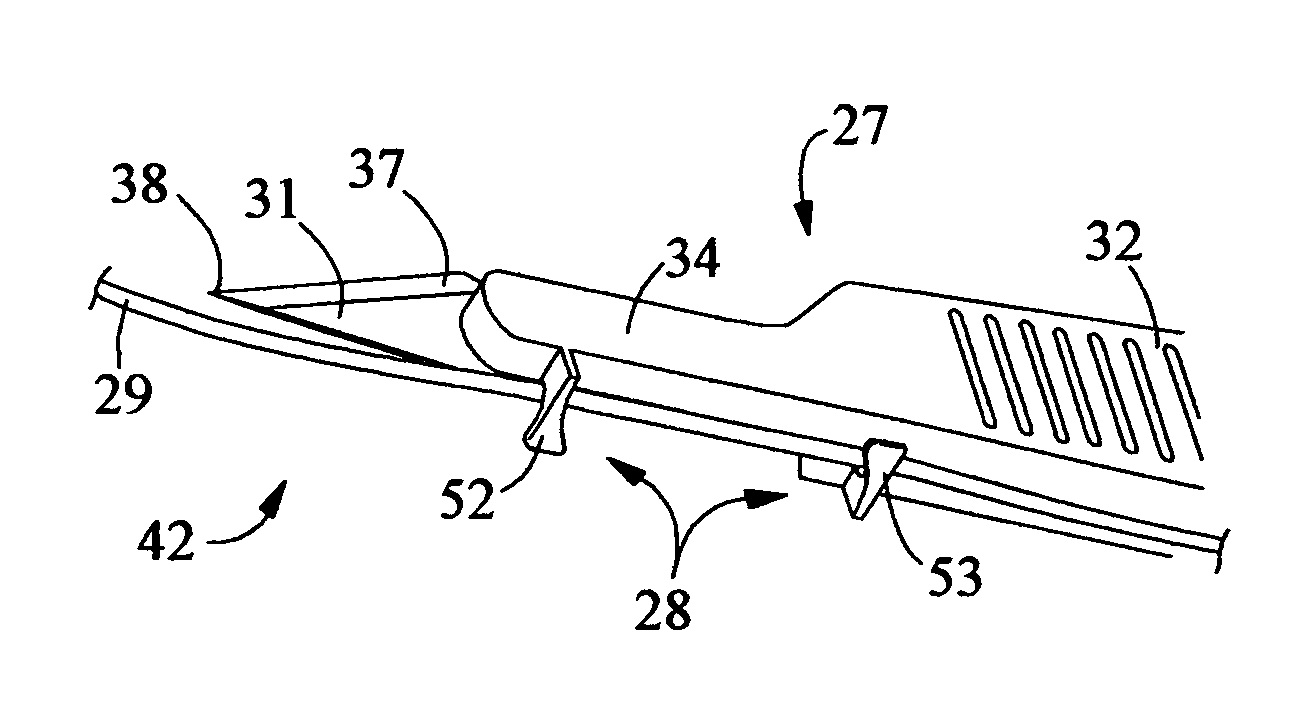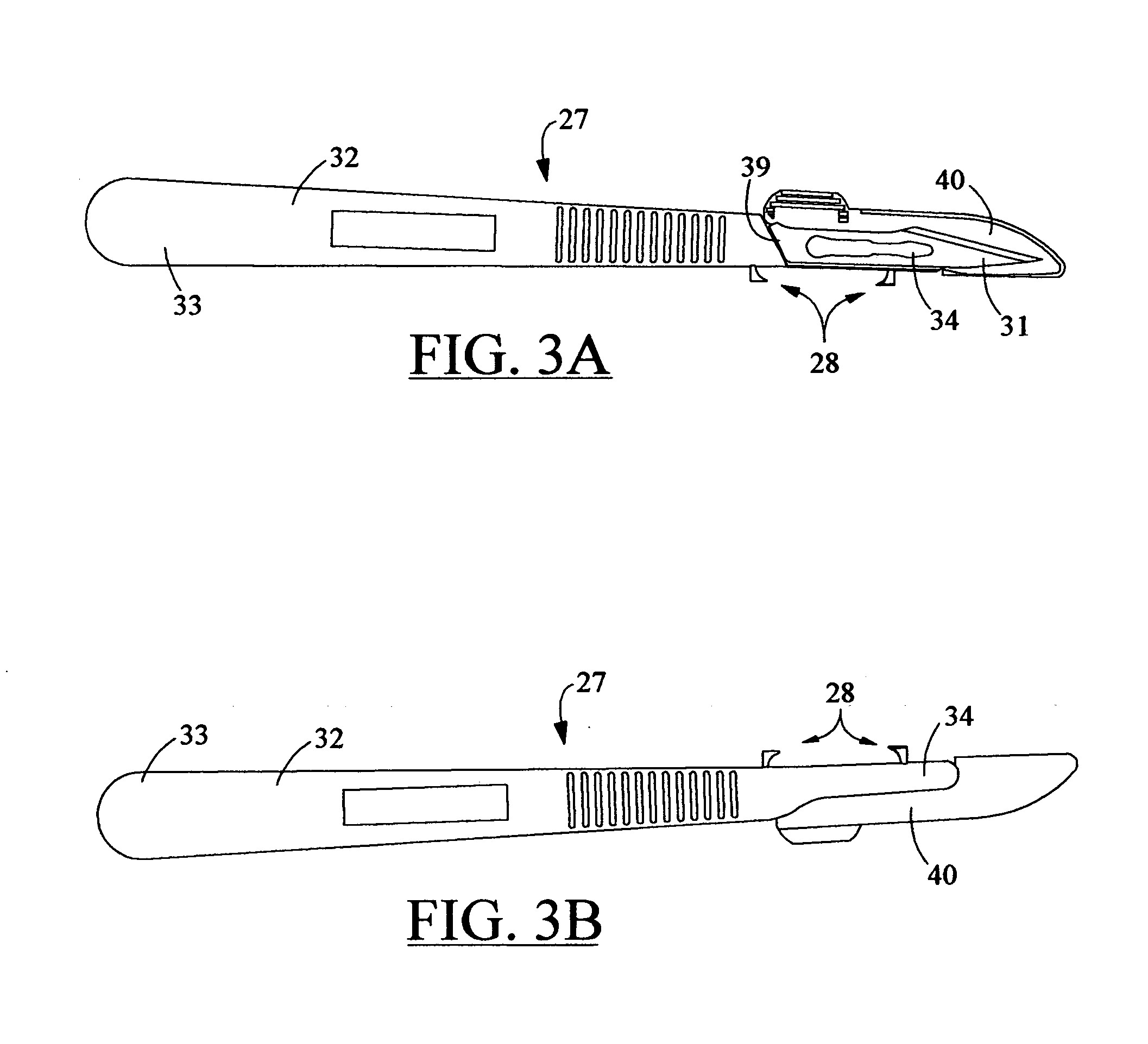Wire guides for a scalpel
a scalpel and guidewire technology, applied in the field of scalpel guide system, can solve the problems of affecting the smoothness of the scalpel, the tip of the medical device can flare and bind at the skin surface, and the tubular medical device is too large and pliable to easily pass through the skin and tissues,
- Summary
- Abstract
- Description
- Claims
- Application Information
AI Technical Summary
Benefits of technology
Problems solved by technology
Method used
Image
Examples
Embodiment Construction
[0050]The present invention provides wire guides for a scalpel, and specifically for a system of guided and controlled movement of the scalpel along a wire. The scalpel guiding system 25 is shown in FIGS. 1 through 22C. The scalpel guiding system is especially useful as an enhancement to the “Seldinger technique.” As discussed in the foregoing section, the Seldinger technique is a common surgical procedure employed by a user 26 of a scalpel 27, for the percutaneous placement of elongated, tubular devices, with the aid of a guidewire or a wire 29.
[0051]As detailed in FIGS. 1 and 2, the scalpel guiding system 25 preferably includes a pair of wire guides 28, each extending from the scalpel 27. For the present invention, the scalpel can be any knife-like surgical device, conventionally including a blade 31 attached to a handle 32. The handle can be formed of a plastic or a metal. Plastic handles are typically employed in disposable scalpel designs, and metal handles utilized in reusable...
PUM
 Login to View More
Login to View More Abstract
Description
Claims
Application Information
 Login to View More
Login to View More - R&D
- Intellectual Property
- Life Sciences
- Materials
- Tech Scout
- Unparalleled Data Quality
- Higher Quality Content
- 60% Fewer Hallucinations
Browse by: Latest US Patents, China's latest patents, Technical Efficacy Thesaurus, Application Domain, Technology Topic, Popular Technical Reports.
© 2025 PatSnap. All rights reserved.Legal|Privacy policy|Modern Slavery Act Transparency Statement|Sitemap|About US| Contact US: help@patsnap.com



